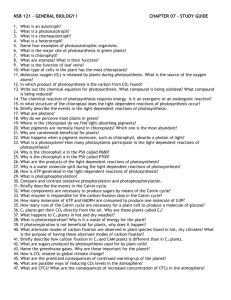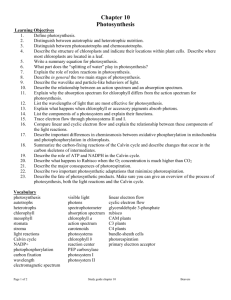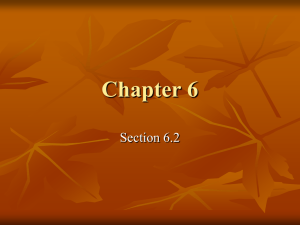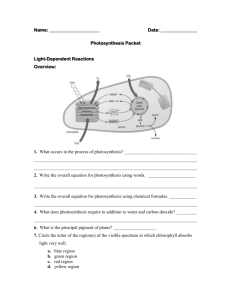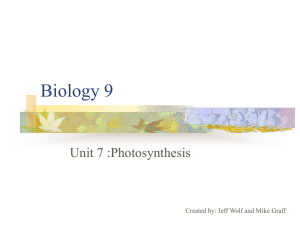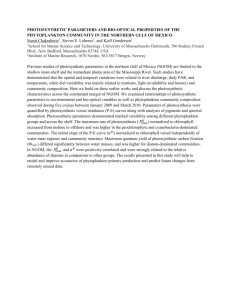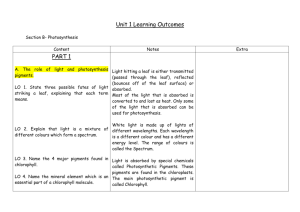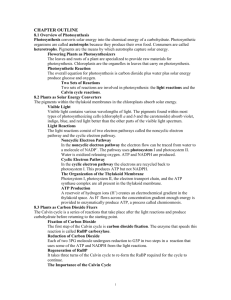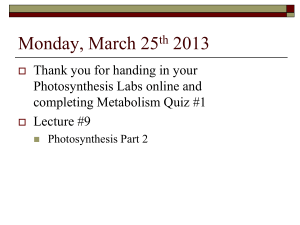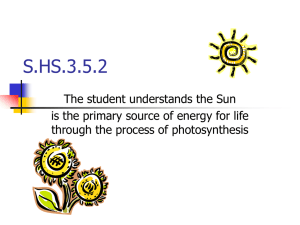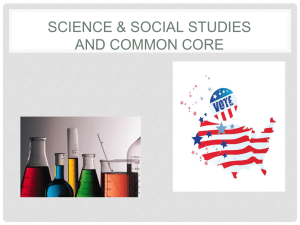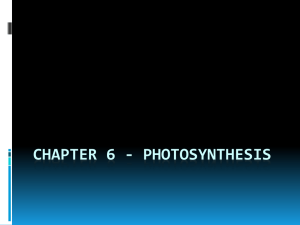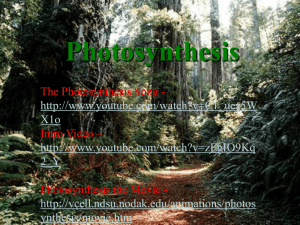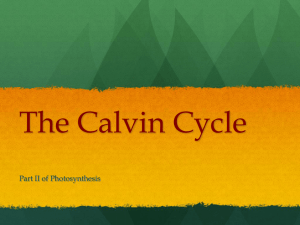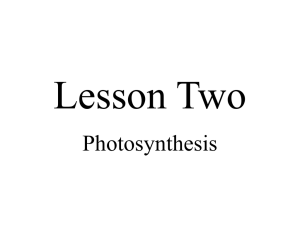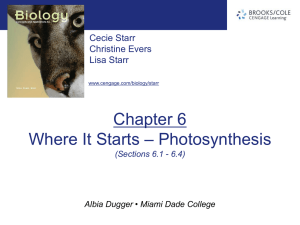Chapter 7
advertisement
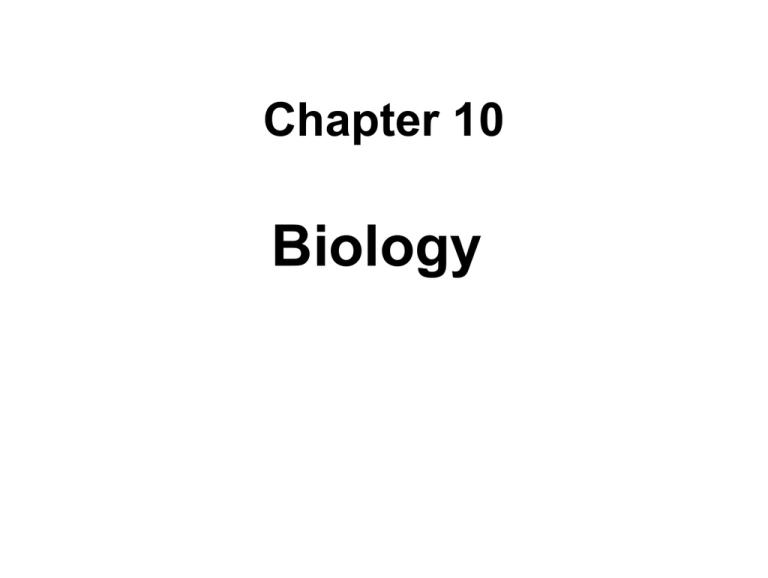
Chapter 10 Biology Solar Energy & Photosynthesis Origin of Solar System Origin of Life Oxygen Energy Atoms Electrons Energy Fusion The Earth Observing System (EOS) ACRIMSAT Active Cavity Radiation Experiment ERBE Earth Radiation Budget Experiment Photosynthesis • 1. Photosynthesis uses sunlight as a source of energy to produce carbohydrates. • 2. Photosynthetic organisms (algae, plants and a few other organisms) serve as ultimate source of food for most life. Photosynthesis2 A. Organisms Depend Upon Photosynthesis • 3. Most food chains start with photosynthesizers. • 4. Photosynthesis has produced most of the oxygen in the atmosphere of our planet. CES Oxygen Production Solar Radiation • 1. Solar radiation is described in terms of its energy content and its wavelength. • 2. Photons are discrete packets of radiant energy that travel in waves. Photosynthetic Pigments • use primarily the visible light portion of the electromagnetic spectrum. • a. Two major photosynthetic pigments are chlorophyll a and chlorophyll b. • b. Both chlorophylls absorb violet, blue, and red wavelengths best. Photosynthetic pigments • c. Very little green light is absorbed; most is reflected back and is why leaves appear green. • d. Carotinoids are yellow-orange pigments which absorb light in violet, blue, and green regions. Spectrophotometer absorption = action spectrum Absorption and action spectrum • Photosynthesis produces oxygen; • production of oxygen used to measure rate of photosynthesis. 7.2. Photosynthesis Occurs in Chloroplasts Photosynthesis Leaf O18 - Used to Track Oxygen Photosynthesis Respiration Photosynthesis Has Two Sets of Reactions • Light-dependent reactions takes place in the thylakoids; cannot take place unless light is present, traps energy. • Light-independent reactions take place in the stroma; can occur in either the light or the dark, fixes carbon. Photosynthesis Chloroplast 7.3. Solar Energy Is Captured A. Light-dependent Reactions • 1. Occur in the thylakoid membranes • 2. Photosystem I and Photosystem II; a Photosystem is a pigment complex and electron acceptor, chlorophyll a and chlorophyll b molecules and orange and yellow accessory pigments • 3. Cyclic and Non-Cyclic electron pathways Cyclic Electron Pathway • Some photosynthetic bacteria utilize cyclic electron pathway only; pathway probably evolved early. • utilized only when CO2 is in limited supply Photosynthesis Carbohydrate Is Synthesized by the Calvin Cycle in the Stroma A. Light-Independent Reactions • 1. The second stage of photosynthesis; light is not directly required. • 2. Require CO2, which enters through leaf and NADPH and ATP, which have been produced by light-dependent reactions. C. The Calvin Cycle Has Three Stages C14 Labeled 1. Fixing Carbon Dioxide • a. CO2 fixation is the attachment of CO2 to an organic compound. • b. RuBP (ribulose bisphosphate) is a fivecarbon molecule that combines with carbon dioxide. 2. Reducing PGA • a. Six-carbon molecule immediately breaks down, forms two PGA (3phosphoglycerate[C3]) molecules. 2. Reducing PGA • b. Each of two PGA molecules undergoes reduction to PGAL in two steps. • c. Light-dependent reactions provide NADPH (electrons) and ATP (energy) to reduce PGA to PGAL. 3. Regenerating RuBP • a. Every three turns of Calvin cycle, five molecules of PGAL are used to re-form three molecules of RuBP (ribulose bisphosphate). 3. Regenerating RuBP • b. Every three turns of Calvin cycle, there is net gain of one PGAL molecule; five PGAL regenerate RuBP. • c. First molecule identified by Calvin was PGA [C3], a three-carbon product; Calvin cycle is also known as C3 cycle.

